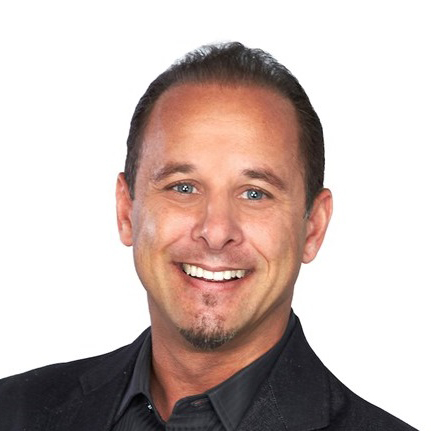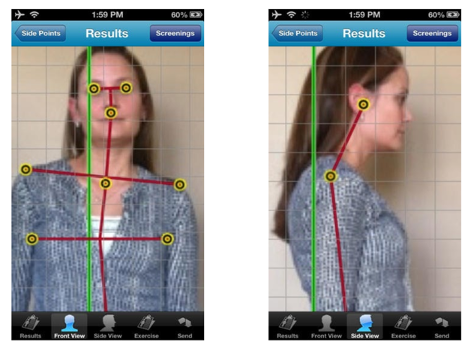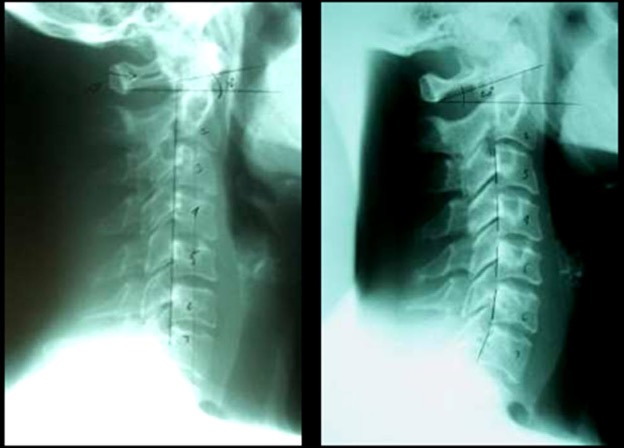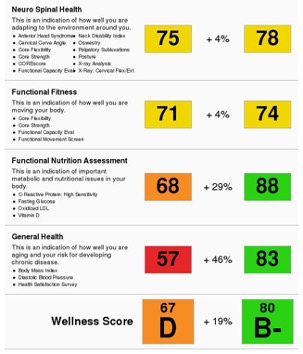by Miles Bodzin, D.C. •
CEO of Cash Practice Systems •
With the Olympics just passing, I have been thinking a lot about measuring performance. Of course, chances are, the patients you are seeing are probably not Olympic athletes. However, measuring performance is just as important!
Imagine you’re out for a run that you do regularly and you’re hoping to improve upon your time. There are a lot of factors to consider that may help you improve, like what you ate that day, your consistency with your routine, the weather outside, etc. However, several behavioral studies have shown that a few other aspects can impact performance as well.
Let’s take the same, exact conditions for that same run. Now, let’s add a stopwatch that is visible to you during your run. What if we also added a report that can break down sections of where you performed strongly and where you may have started falling behind on your run?
According to Pearson’s Law, “When performance is measured, performance improves. When performance is measured and reported back, the rate of improvement accelerates.“
Let’s now take it one step further and have those same conditions with the reporting but also add in a live audience cheering you on as you run. “Run, run, run!”
This has been studied in The Hawthorne Effect, which states that people will modify their behavior simply because they know that they’re being observed. I know that having spectators would definitely give me some extra motivation!
Fitness Tracking watches like AppleWatch and FitBit have these concepts mastered! Not only do they give you constant feedback and reporting, but they also allow you to share it with others.
People can even go into competition with their friends or give kudos when someone finishes a workout. People are motivated to close their fitness rings for the day or have their friends see that they’re working out. Have you seen those memes that say if you go to the gym but don’t check in on Facebook, did the workout even count?
But what does this have to do with your Chiropractic office? In practice, my mission was to create a practice full of loyal patients committed to their care. One of the ways this is accomplished is to provide the constant feedback that we all crave. This has already been proven in behavioral psychology and your practice is no different!
Loyal patients need feedback and reporting, not only to help them understand that they should begin care but also on how they’re progressing so they know to remain in your care.
Have you ever had a patient that has been to another chiropractor and asked them why they’re coming to you now instead? They may say things like, “I didn’t know how I was doing over there,” or, “I feel like they just wanted me to keep coming back.”
In these cases, there was no understanding of the progress that they were making. This is because the previous doctor failed to effectively communicate the progress that they were making towards a goal in a format that the patient understands.
So, how do we accomplish this? Having the right tools, applications, and systems to effectively communicate with your patients is easier than ever in these days of technology! There are way too many applications to name but some of my favorites to utilize include:
Posture Measurement Applications
A picture is worth a thousand words. So take a picture of your patient from the side and front and show them how their posture is off. This can be done using an app that is designed to do this. Or if you prefer, just have your patient stand in front of a posture grid or plumb line and take their picture. The point is to be able to show them how their posture is not normal. This is a great way to demonstrate the need for care. But it’s also a great visual aid in demonstrating improvements in posture.
One thing I always did was take pictures of patient posture using THEIR phone as well. We all know how everyone likes to show their friends what their doctor said. Give them the pics and I promise they’ll end up showing them to their friends who will also want to come to you and get the same tests done. I’ve witnessed this time and time again.
X-rays
If you plan on making a change to a person’s spine, then radiographs are a great way to demonstrate those changes. Again, a picture is worth a thousand words. So show them how their spine is not normal. And over time, show them how it improves. I loved showing my patients before and after x-rays of other patients in my report of findings.
It would go something like this. “Mary, let me show you some examples of people similar to you who I helped. Here’s a patient with a straight neck. You can see their neck is very straight and the C1 angle is only 10 degrees. Again, the normal shows this vertical line falls inside the seventh cervical and the C1 angle is normally 25 to 35 degrees. Here is their follow-up film X months later. Look at the great results she got. We restored her cervical curve and all her complaints were resolved.”
Same as with the posture pics, I would recommend you give your patients copies of their x-rays. Back in the day before digital x-rays, I would just use their flip phone to take some pics of their films on the view box. Did I just age myself 😉 ?
Nowadays with digital x-ray, you can email them a copy with your line drawing and notes written right on them. Make it easy for them to share with family and friends. Again, everyone’s favorite subject is themself. I would routinely get referrals exactly this way.
I think you get the idea here. You want to use the apps and tools you can use to SHOW the patient the need for your care along with the ability to demonstrate the progress they’re making.
For example, you can show before and afters with:
- Foot scans
- Range of Motion tests
- Strength and coordination exercises
- SEMG scans
- Blood work for more functional focused offices
- If you have a fitness/workout center in your office, tools that show heart rates and reflect output on a leaderboard are amazing!
Once I have gathered that information, I create a Wellness Score (another application) to compile this data in an easy-to-understand format – a Report Card. After all, who doesn’t know what a report card means? And no one wants to have a bad grade. After they see their grade, the next question in their mind will be, “How can I improve?”
During re-exam time, I create another report that compares the data side-by-side to show the progress being made.
This does several things:
- Gives them the feedback that they need to show they are making progress.
- It helps them see that even if their symptoms may be gone, they still should remain under care to get an even better grade!
- It gives them something to hang on the refrigerator for their family to see their progress. You will see that some patients will even post these reports to their social media.
- Keeps them motivated to keep their appointments and recommended treatment.
Now, I’m going to add in a little bit more of the Hawthorne Effect. I like to take these before and after reports and post them to our social media, telling the story of this patient and how proud I am of them (in a HIPAA compliant manner).
This shows potential patients the results that you get in your office, motivates current patients to keep up on their own progress, and if the patient is comfortable with it, they will share their report with their friends as well!
As an added bonus, you can send this data to the patients’ other practitioners to show the results you get in your office. Hopefully, they’ll refer more patients your way!
You really can’t go wrong with any applications that you end up using (even if it’s something as simple as a before and after posture picture with your phone’s camera). As long as you’re giving your patient that constant feedback that we all thrive on, you are one step closer to creating a loyal patient base.
About the Author: Dr. Miles Bodzin is the Founder & CEO of Cash Practice Systems, Chiropractic’s #1 Technology Platform for Creating Loyal Patients. He may be contacted at drobdzin@cashpractice.com or (877) 343-8950 x200.













 ▶︎
▶︎  Why is the Discount Challenge prize amount $15,024? Because that is the average “per-occurrence” fine for Medicare inducements. That’s not $15,024 per patient, that’s not per provider, that’s PER VISIT. Stinks, doesn’t it? To us, the prize amount is worth the investment if we can help our profession better understand proper discounting.
Why is the Discount Challenge prize amount $15,024? Because that is the average “per-occurrence” fine for Medicare inducements. That’s not $15,024 per patient, that’s not per provider, that’s PER VISIT. Stinks, doesn’t it? To us, the prize amount is worth the investment if we can help our profession better understand proper discounting.